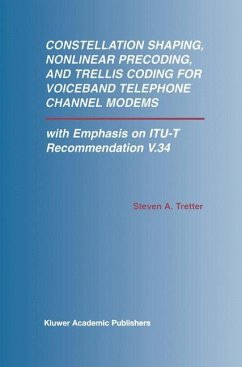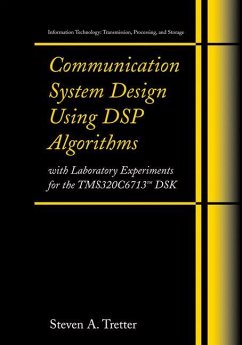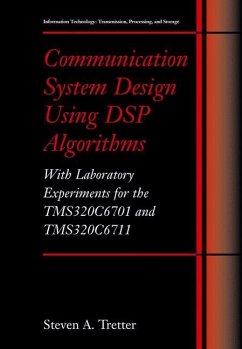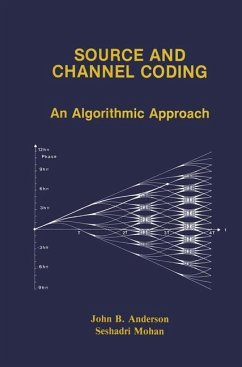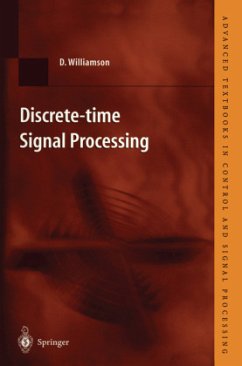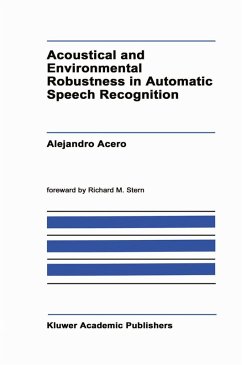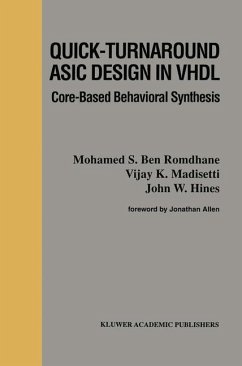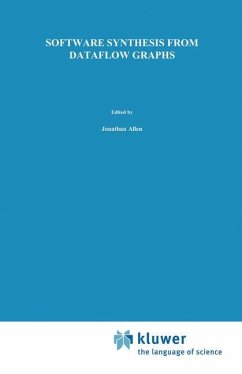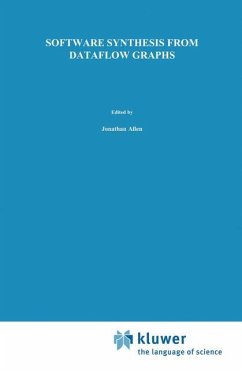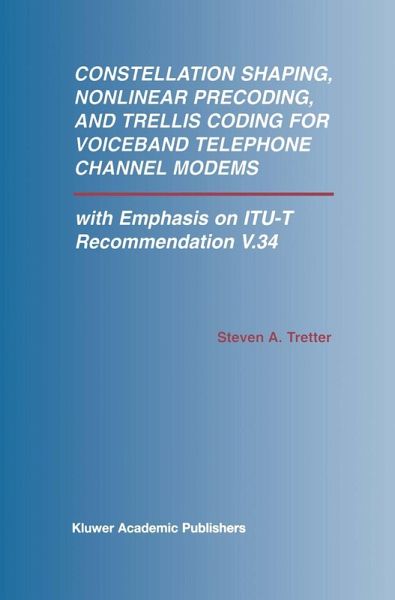
Constellation Shaping, Nonlinear Precoding, and Trellis Coding for Voiceband Telephone Channel Modems
with Emphasis on ITU-T Recommendation V.34
Versandkostenfrei!
Versandfertig in 1-2 Wochen
77,99 €
inkl. MwSt.
Weitere Ausgaben:

PAYBACK Punkte
39 °P sammeln!
This book is an excellent reference for those working in the broad fields of communication theory, information theory, and modem design. It is essential for researchers in modulation and coding for voiceband telephone line modems; signal constellation design; nonlinear precoding for modems; and trellis coding.The author presents the theory behind the new modulation and coding techniques included in ITU-T Recommendation V.34. Topics discussed include signal constellation shaping by shell mapping, nonlinear precoding, four-dimensional trellis codes, and fast equalizer training by using periodic ...
This book is an excellent reference for those working in the broad fields of communication theory, information theory, and modem design. It is essential for researchers in modulation and coding for voiceband telephone line modems; signal constellation design; nonlinear precoding for modems; and trellis coding.
The author presents the theory behind the new modulation and coding techniques included in ITU-T Recommendation V.34. Topics discussed include signal constellation shaping by shell mapping, nonlinear precoding, four-dimensional trellis codes, and fast equalizer training by using periodic sequences and FFT methods. In addition, several approaches that were considered but not accepted are presented including trellis shaping, trellis precoding, and modulus conversion.
The author presents the theory behind the new modulation and coding techniques included in ITU-T Recommendation V.34. Topics discussed include signal constellation shaping by shell mapping, nonlinear precoding, four-dimensional trellis codes, and fast equalizer training by using periodic sequences and FFT methods. In addition, several approaches that were considered but not accepted are presented including trellis shaping, trellis precoding, and modulus conversion.





